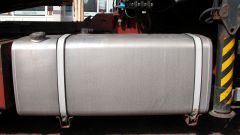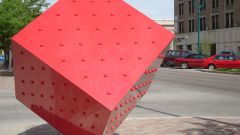Instruction
1
If the body has the shape of a rectangular parallelepiped (it can be match boxes, book, cube, etc.), then its volume is given by: V=abc, where a is the body height, b - width, c - length. Values are removed by using a regular ruler or measuring tape. Suppose that we are given a matchbox to calculate its volume it is necessary to measure its parameters: a=2cm, b=4cm, c=5 cm, then the volume of the box equal to 4cm*2cm*5cm=40 cm in the cube.
2
If the body shape different from rectangular, irregular shape, its volume can be found by the method, which was discovered by Greek scientist Archimedes in the third century BC. To do this, pour water into the measuring vessel, to remember how much water in it (V1), and then lowering a body in there and measure how much water was (V2), a volume of the subject is difference:V2-V1. You should carefully examine the vessel in what unit he measures the water, most likely in milliliters or liters, then the volume of the body will also be in the same size.
Example: let it is necessary to measure the volume of the stone. Pour in a beaker 50 ml of water. After dropping a stone into the water in the beaker was 60 ml of water, then the volume of this stone is equal to 60-50=10ml.
Example: let it is necessary to measure the volume of the stone. Pour in a beaker 50 ml of water. After dropping a stone into the water in the beaker was 60 ml of water, then the volume of this stone is equal to 60-50=10ml.
3
In the case when a known mass and body density, body volume rasschityvaetsya by the formula: V=m/p where m is mass, p is the density. We assume that the formula is necessary only when body mass is known in kilograms, and the weight in kilograms divided by cubic meter; or the mass is in grams, and density is in grams per cubic cm, then the volume in the first case will be measured in cubic meters, and the second in cubic centimeters. Body density - value table, there are special tables of densities of various substances.
Example: suppose we need to find the volume of an iron stud, a mass of 7.8 g. In a table of densities, find the iron density of 7.8 g/cubic cm Then the volume is equal to 7.8 (g) divided by 7.8 (g/CC) is 1 cubic centimeter.
Example: suppose we need to find the volume of an iron stud, a mass of 7.8 g. In a table of densities, find the iron density of 7.8 g/cubic cm Then the volume is equal to 7.8 (g) divided by 7.8 (g/CC) is 1 cubic centimeter.
Useful advice
To convert measurements of volume at each other, it is necessary to know the following:
1l=1000ml, 1ml=0,001 L.
1l=0.001 cubic meters
1 cubic centimeter=1 ml.
1l=1000ml, 1ml=0,001 L.
1l=0.001 cubic meters
1 cubic centimeter=1 ml.




